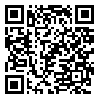Volume 10, Issue 4 (Winter 2025)
JMIS 2025, 10(4): 0-0 |
Back to browse issues page
Ethics code: مقاله مروری فاقد کد اخلاق
Download citation:
BibTeX | RIS | EndNote | Medlars | ProCite | Reference Manager | RefWorks
Send citation to:



BibTeX | RIS | EndNote | Medlars | ProCite | Reference Manager | RefWorks
Send citation to:
Alizadeh Savareh B, Bagheri Z, Bashiri A. Tele-Monitoring Technologies in Providing Home Care for the Elderly People: a Narrative Review. JMIS 2025; 10 (4)
URL: http://jmis.hums.ac.ir/article-1-541-en.html
URL: http://jmis.hums.ac.ir/article-1-541-en.html
PhD in Health Information Management, Associate Professor, Department of Health Information Management, School of Health Management and Information Sciences, Health Human Resources Research Center, Shiraz University of Medical Sciences, Shiraz, Iran.
Abstract: (1033 Views)
Introduction: As the elderly population continues to grow, their quality of life faces significant challenges. This study explores remote monitoring technologies aimed at enhancing home care for older adults.
Information sources or data: In the present study, relevant information was gathered from databases including PubMed, Google Scholar, Scopus, and Science Direct.
Selection methods for study: This narrative review study, conducted in 2023, employed a library-based methodology involving keyword searches across PubMed, Scopus, Google Scholar, and Science Direct databases. The search strategy utilized terms related to remote monitoring, home care, the elderly population, and technology.
Combine content and results: The review of twenty articles identified nine discrete technological modalities. Seven articles focused on remote monitoring systems, and seven investigated smart home technologies and the Internet of Things (IoT). Two articles examined wearable devices, while single articles addressed mobile health, structured telephone support, artificial intelligence, and sensors and robotics, respectively. The primary function of the remote monitoring technologies identified was the acquisition and surveillance of physiological vital signs. Notably, fifteen studies reported positive outcomes associated with these technologies, including a reduction in healthcare expenditures and an enhancement in patients’ quality of life.
Conclusion: Telemonitoring technologies facilitate effective communication between older adults and healthcare providers. These systems enable the surveillance of physiological vital signs, medication adherence, physical activity levels, and emotional well-being, while also providing predictive analytics regarding health status and issuing alerts in emergency situations. The implementation of these technologies has been associated with a reduction in hospital admissions and healthcare costs, alleviation of caregiver burden, improvement in healthcare outcomes, and enhancement of the overall well-being and quality of life for the elderly population.
Information sources or data: In the present study, relevant information was gathered from databases including PubMed, Google Scholar, Scopus, and Science Direct.
Selection methods for study: This narrative review study, conducted in 2023, employed a library-based methodology involving keyword searches across PubMed, Scopus, Google Scholar, and Science Direct databases. The search strategy utilized terms related to remote monitoring, home care, the elderly population, and technology.
Combine content and results: The review of twenty articles identified nine discrete technological modalities. Seven articles focused on remote monitoring systems, and seven investigated smart home technologies and the Internet of Things (IoT). Two articles examined wearable devices, while single articles addressed mobile health, structured telephone support, artificial intelligence, and sensors and robotics, respectively. The primary function of the remote monitoring technologies identified was the acquisition and surveillance of physiological vital signs. Notably, fifteen studies reported positive outcomes associated with these technologies, including a reduction in healthcare expenditures and an enhancement in patients’ quality of life.
Conclusion: Telemonitoring technologies facilitate effective communication between older adults and healthcare providers. These systems enable the surveillance of physiological vital signs, medication adherence, physical activity levels, and emotional well-being, while also providing predictive analytics regarding health status and issuing alerts in emergency situations. The implementation of these technologies has been associated with a reduction in hospital admissions and healthcare costs, alleviation of caregiver burden, improvement in healthcare outcomes, and enhancement of the overall well-being and quality of life for the elderly population.
Type of Study: Review |
Subject:
General
Received: 2024/08/11 | Accepted: 2025/03/3 | Published: 2025/03/18
Received: 2024/08/11 | Accepted: 2025/03/3 | Published: 2025/03/18
Send email to the article author
| Rights and permissions | |
 |
This work is licensed under a Creative Commons Attribution-NonCommercial 4.0 International License. |







 hums.ac.ir
hums.ac.ir